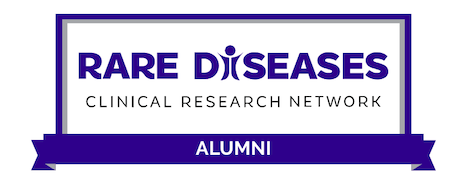GMPPB-CDG is a rare genetic condition caused by mutation (aka pathogenic variants) in the GMPPB gene. The GMPPB gene gives our bodies instructions to make a protein called Guanosine diphosphate-mannose pyrophosphorylase B (GMPPB), which plays an important role in glycosylation. Pathogenic variants in GMPPB cause this protein to not work properly, leading to GMPPB-CDG, a genetic condition affecting many different parts of the body. Pathogenic variants in GMPPB have also been associated with neuromuscular disorders including muscular dystrophy and congenital myasthenic syndromes.
Symptoms
GMPPB-CDG presents with a broad spectrum of symptoms, typically presenting in infancy. They primarily affect the muscles but may also involve other parts of the body. Common symptoms include hypotonia (low muscle tone), developmental delay, intellectual disability, and seizures. Most individuals experience progressive muscle weakness, motor delays, and difficulty with movement. Neurological symptoms can include ataxia (poor muscle control), dystonia (involuntary body movements), peripheral neuropathy (damage to the nerves outside the brain and spinal cord), and in some cases, congenital myasthenic syndrome-like features (muscles weakness worsening after muscle use).
Other findings can include microcephaly (small head size), eye abnormalities such as cataracts, strabismus (crossed eyes), and nystagmus (involuntary eye movements), enlarged liver, an increased bleeding risk, and skeletal abnormalities (clubfoot, scoliosis, joint contractures). Some individuals experience feeding difficulties requiring G-tube placement. Rarely, individuals may have heart conditions.
To date, more than 80 cases have been documented in the medical literature.
Diagnosis
The diagnosis of GMPPB-CDG is based on clinical features and laboratory findings. Laboratory abnormalities may include elevated liver enzymes, abnormal coagulation profiles, and abnormal transferrin glycosylation, although glycosylation patterns can sometimes be normal. Genetic testing is essential for diagnosing GMPPB-CDG. Everyone has two copies of the GMPPB gene. Individuals with GMPPB have a pathogenic variant in each copy of their GMPPB, resulting in two non-working copies of the gene. Patients presenting with myasthenia and/or muscular dystrophy-like symptoms along with elevated creatine kinase (CK) levels should be evaluated for GMPPB-CDG.
Treatment and Prognosis
Currently, there is no curative treatment for GMPPB-CDG, but early intervention can significantly improve quality of life. Multidisciplinary care is essential, focusing on seizure control, physiotherapy, occupational therapy, and supportive management. Anti-epileptic medications are commonly used, and some patients may respond to a ketogenic diet. Physiotherapy and occupational therapy help maintain muscle function and mobility, while supportive care addresses infections, coagulation abnormalities, and nutritional needs. Research into potential therapeutic approaches is ongoing, but treatment remains largely symptom-based.

